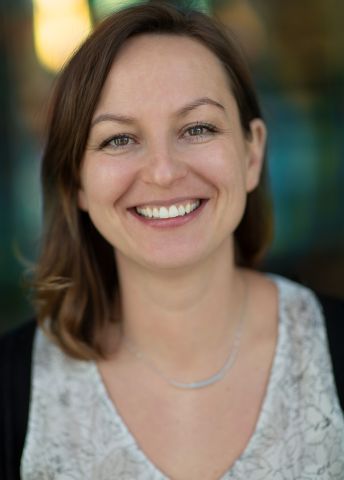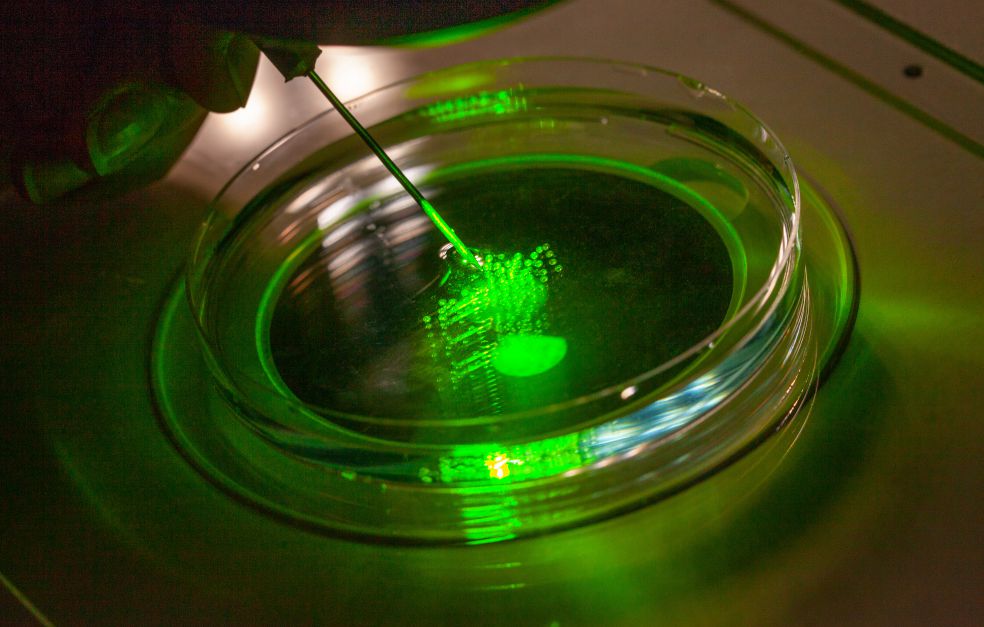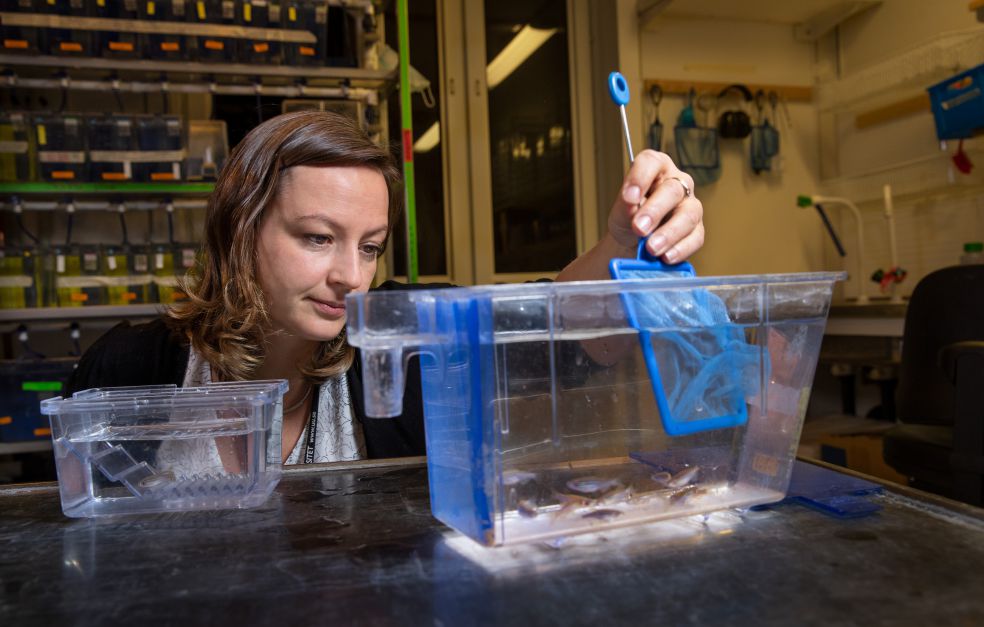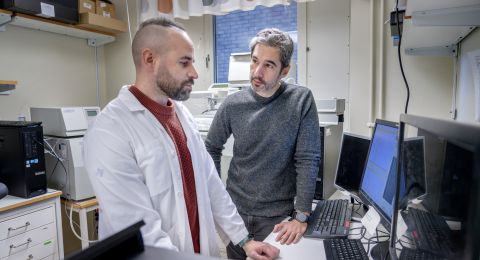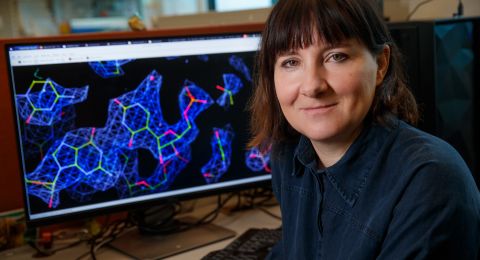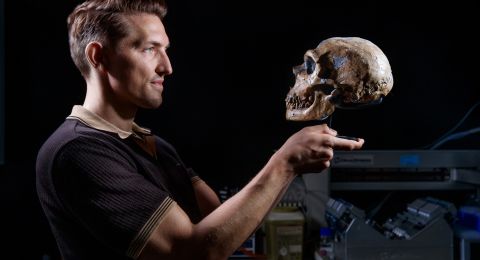Lymphatic vessels are found throughout the body, and play a key role in our immune system. But there is still much we do not know about the lymphatic system formation and the role it plays in various diseases. Wallenberg Academy Fellow Katarzyna “Kaska” Koltowska wants to study how growth of lymphatic vessels is regulated, knowledge that may pave the way for new therapies for lymphedema or cancer spread.
Katarzyna “Kaska” Koltowska
PhD in Developmental Biology
Wallenberg Academy Fellow prolongation grant 2022
Institution:
Uppsala University
Research field:
Studying how lymphatic vascular system growth is regulated to gain a deeper understanding of the system. One aim is to find new drug target molecules.
The lymphatic system branches widely throughout the body, and has several important functions. Yet it remains relatively little researched, as Kaska Koltowska, who has a PhD in developmental biology, explains:
“There has been so much emphasis on research into the cardiovascular system that the lymphatic system has been somewhat overshadowed. It’s like the forgotten cousin in our efforts to understand human health.”
Research transferred from Australia
The grant awarded by the Knut and Alice Wallenberg Foundation has enabled Kaska Koltowska to transfer her research from Queensland University in Australia to Sweden. She is now setting up a research team at the Rudbeck Laboratory in Uppsala. There is an element of destiny in the move, given that Olof Rudbeck the Elder discovered the lymphatic system in the 17th century.
“It must be fate that has brought me here,” Kaska says, laughing.
More than 350 years after Rudbeck’s discovery, much research remains to be done to gain a proper understanding of the lymphatic system formation and function. Anatomically speaking, the system is made up of lymphatic vessels, lymph glands, and several organs, including the spleen and the thymus. Just like blood vessels, lymphatic vessels reach virtually all tissues and organs in the body. A transparent fluid called lymph circulates through the system.
I am delighted to have been given this opportunity. Thanks to the grant, I have been able to transfer my research to Sweden, and can use all my creativity to build up a new laboratory and a tailor-made research team. It’s also a privilege to belong to a network of other young researchers in different disciplines.
Lymphatic vessels and disease
The most important function of lymph is to fight infection and ‘keep a clean house’ by removing old, damaged or foreign cells. But the lymphatic system is not only a cleaner. Kaska explains that researchers are increasingly turning their attention to the role it plays in a broad spectrum of diseases.
The most well-known condition is lymphedema, which is caused by having either too few or dysfunctional lymphatic vessels. As a result, lymph does not circulate properly and accumulates in one place. The result is a swelling, which may occur in different parts of the body.
“It’s not always a question of life-threatening diseases – it’s more about conditions that lower patients’ quality of life. For instance, we know that about one-third of women who have surgery for breast cancer suffer from lymphedema in their arms because the procedure involves removal of lymph nodes.”
Research in the past few years suggests that lymph is also involved in many other pathological processes. These include immunological impairment, since lymph transports many immune cells. Other examples are diseases of the metabolism and atherosclerosis.
“We have also realized that the lymph vessels play a part in cancer. In that case it is not a question of impaired function – formation of lymphatic vessels in a tumor enables the cancer to spread to the rest of the body.”
Focus on formation of lymphatic vessels
Kaska is concentrating on understanding the fundamental mechanisms. As part of the project she is running, she wants to study how lymphatic vessels are formed. She has already shown how lymphatic precursor cells are formed from existing veins. Now she wants to build on that knowledge, and examine how cell division is regulated to enable the development correctly sized and formed lymphatic vessels.
“We already know who the key players are, including a growth factor known as VEGF-C. But what fascinates me more is the idea of studying the process as a whole. So much happens in a cell every second. I want to understand how all these processes are coordinated.”
Enlisting the help of tropical fish
Kaska’s experiments use common aquarium fish. The zebrafish is a much-appreciated model organism, and has the advantage of being transparent. Several hundred mini-aquariums containing thousands of fish are housed in a special climate-controlled room. Of particular interest to the researchers are the zebrafish embryos, which allow the study of all cells and organs while they are developing.
“We can observe the actual cells and see how their molecular composition and behavior changes at exactly the moment it happens. And because they are transparent, we can visualize the process in real time.”
Another plus is that zebrafish embryos can be kept alive under the microscope. And they develop incredibly rapidly – after only 24 hours the zebrafish has a heart and blood circulation. Using genetically modified zebrafish, the hope is to gain a better idea of how various growth factors regulate formation of the lymphatic vessels.
In the future, new findings about how lymphatic vessels are formed may help scientists to develop more effective treatments for lymphedema, and therapies that prevent tumors from forming lymphatic vessels may halt the spread of cancer. A medical application for the research findings remains a distant prospect, however. But Kaska is spurred on by the idea that her work will one day benefit patients. A while ago she gave a lecture for a support group for lymphedema sufferers.
“It was an eye-opener for me to meet the patients and to find out that my research means a lot to them. It’s important that those affected are given better information about the causes of the various diseases. It’s also something that drives me as a researcher – realizing that I can have a positive impact on their wellbeing.”
Text Nils Johan Tjärnlund
Translation Maxwell Arding
Photo Magnus Bergström
